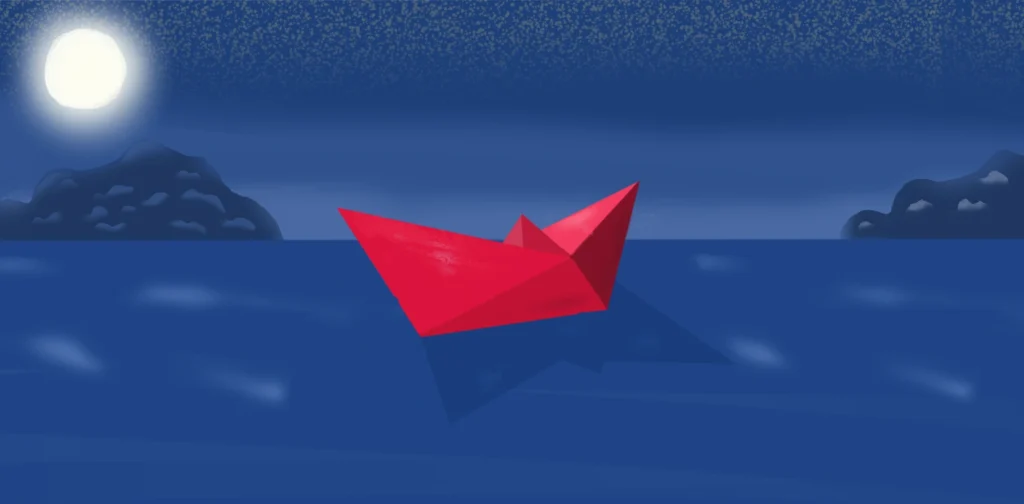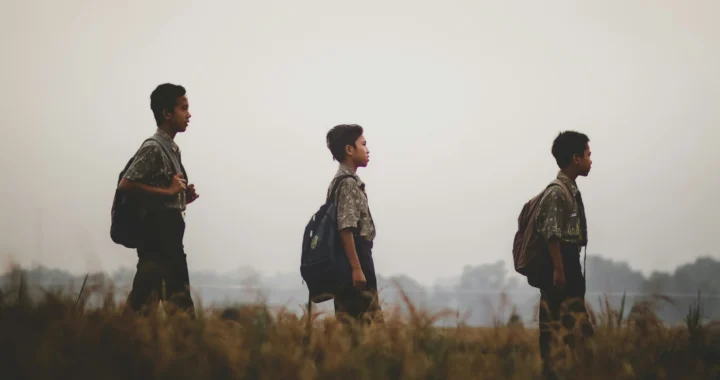Nepal as a Catalyst for the Legal Protection of Climate Refugees

Illustration by Irhan Prabasukma
From frequent floods to the ever-increasing global temperatures, the impacts of climate change are undeniable. As the world struggles to halt the impending climate crisis, we must adapt. Climate change creates new gaps, and those who are the least responsible for it are the ones most likely to fall through the cracks. This is usually the case for the displacement of people due to climate-related disasters. As such, it is past time for the world to prepare for and protect climate refugees.
The Climate Crisis in Nepal
Nepal is experiencing a climate refugee crisis. Despite ranking among the countries with the lowest greenhouse gas emission rates globally by contributing only 0.1% of total output, Nepal is one of the most vulnerable countries to the onset of climate change.
This stems from the country’s unique topographical landscape which houses eight out of ten of the world’s tallest mountains, including Mount Everest with a peak of 8,848 meters. Scientists believe that altitude at these levels creates an “albedo effect”, in which melted ice caps—attributed to global temperature rise—expose underlying soil and rock formations. This causes mountainous regions to absorb solar radiation and warm at rapid rates.
For Nepal, these lead to a crisis. Despite Nepal’s macro-level policies—the 2019 National Climate Change Policy, the 2022 Solid Waste Management Policy, the 2022 Forest Regulation, and the 2022 Land Use Regulation, among others—climate change continues to disrupt the lives and livelihoods of local communities. People are facing extreme weather events like floods, landslides, and heatwaves, driving migration patterns.
While the crisis impacts everyone, such unpredictability has disproportionately affected women due to the country’s deeply gendered social and political inequalities that restrict women’s economic freedoms, particularly unmarried women in rural areas. Therefore, a robust and gender-responsive legal framework is needed to address the issue.
The Legal Void for Climate Refugees
The current international framework, the 1951 United Nations Refugee Convention (“1951 Convention”) and its 1967 Protocol, declines to extend legal protections to climate refugees. According to Article 1 of the 1951 Convention, the definition of a refugee largely refers to someone fleeing or being unable to return to their country due to “well-founded fear of being persecuted for reasons of race, religion, nationality, membership of a particular social group or political opinion.” The 1967 Protocol expanded the 1951 Refugee Convention’s geographical and temporal scope beyond Europe and included events that occurred both before and after 1951.
Despite these advancements, challenges in implementing comprehensive refugee protections persist. Several states remain non-signatory to both the 1951 Convention and its 1967 Protocol. To further complicate matters, some countries have also failed to implement their own domestic legislation. Instead, they have taken different–and often competing–approaches towards refugees depending on their origins. The result has been a disjointed patchwork of policies that have significantly undermined refugees’ rights.
Most importantly, there is a gap in the existing legal framework on the displacement of people caused by the impacts of climate change.
Climate Refugees Protocol
The escalating frequency and severity of climate-related disasters highlight the urgent need for robust legal frameworks to protect those forced to flee. To achieve this, a Climate Refugees Protocol should be introduced, establishing legal protections similar in scope to those fleeing persecution.
Both the 1951 Convention’s principle of non-refoulement—prohibiting the return of a person to a country where they have a real risk of facing serious harm—and the creation of the 1967 Protocol—where states agreed to reconsider the meaning of who constitutes a refugee—support the creation of the Climate Refugees Protocol.
While climate refugees may find legal recourse through regional or domestic protections, these safeguards are inconsistent and not universally guaranteed. A uniform resolution is needed to ensure comprehensive and equitable protection for all those displaced by climate change. Such a protocol would be novel, as it would take a proactive approach towards climate refugees rather than a reactionary approach, potentially saving states trillions of dollars and safeguarding the lives of millions of people worldwide.
Nepal as a Catalyst for Change
Nepal’s geopolitical position uniquely conditions it as a catalyst for supporting climate refugees and the creation of the Climate Refugees Protocol. Not only is Nepal one of the most climate-vulnerable countries in the world, but it is one of the few countries that has refused to sign both the 1951 Convention and the 1967 Protocol. The country also has no domestic asylum law pathways for refugees to pursue.
Thus, Nepal can serve as a catalyst, inviting other states like India, Bangladesh, Sri Lanka, Indonesia, Malaysia, Pakistan, and other non-signatories, to adopt the Climate Refugees Protocol. Nepal’s firsthand experience with climate-induced displacement positions it as a credible advocate for climate refugees. Beyond that, the country’s neutrality and geographical proximity to China and India provide a strategic opportunity to initiate regional and global dialogue on climate refugees. Despite historic reluctance to adopt refugee protections, a reassessment of its approach is necessary, given that climate-induced migration has no longer become a distant concern for the state but is an everyday reality that demands action.
Editor: Nazalea Kusuma

Join Green Network Asia Membership
If you find this content useful, support Green Network Asia’s movement to create positive impact for people and the planet through public education and multi-stakeholder advocacy on sustainability-related issues and sustainable development. Get exclusive benefits for personal and professional development.
Become a Member NowAlexandria Virginski
Alexandria is a U.S. immigration attorney, specializing in employment-based visas. She earned her Juris Doctor from the University of Wisconsin with a concentration in international and comparative law, and holds dual Bachelor of Arts degrees in international relations and Spanish from Michigan State University.


 Strengthening Societal Resilience in the Age of Disruptions
Strengthening Societal Resilience in the Age of Disruptions  Building Strategic Approach to Support Urban Health for All
Building Strategic Approach to Support Urban Health for All  Understanding and Addressing Multiple Dimensions of Child Deprivation
Understanding and Addressing Multiple Dimensions of Child Deprivation  Building Heat Resilience Amidst Rising Risk in the Asia-Pacific
Building Heat Resilience Amidst Rising Risk in the Asia-Pacific  Sounds Right and Recognizing Nature as an Artist for Biodiversity Conservation
Sounds Right and Recognizing Nature as an Artist for Biodiversity Conservation  Statewide Treaty Bill: Australia’s First Treaty with the Indigenous Australians Passed in Victoria
Statewide Treaty Bill: Australia’s First Treaty with the Indigenous Australians Passed in Victoria